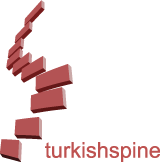ABSTRACT
A 63-year-old female patient was admitted to our clinic with complaints of hip pain and difficulty in walking. She had a history of a motor vehicle accident seven months previously, which was followed up in another medical center with six weeks of skeletal traction and six months of bed rest.
Her neurological examination was normal. There was pain with hip movements. She had pathological movement and pain when pressing the iliac area, and pelvic instability.
A CT scan and X-rays showed that there was a zone III (central) vertical sacrum fracture, right ischium pubic arm fracture, left hip undisplaced acetabular fracture, and more than 5 cm of pubic diastasis. Undifferentiated acetabular fractures were again present in the left hip.
We operated on the patient due to the sacral vertical nonunion and pubic diastasis. First, the pubic diastasis was repaired using a direct anterior approach with a five-hole reconstruction plate, and then the patient was turned to a prone position and spino-pelvic fixation was done with L4, L5, S1 and iliac screws. The patient was mobilized painlessly on the first day postoperatively.
Isolated sacral fractures are not commonly seen, and they generally display a transverse orientation. Zone III (central) sacral fractures are rarely seen, and only a few cases have been reported in the literature.



